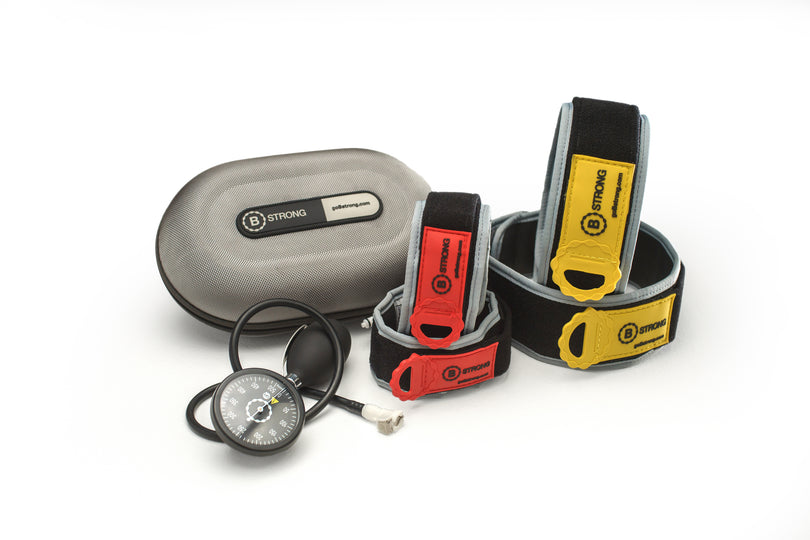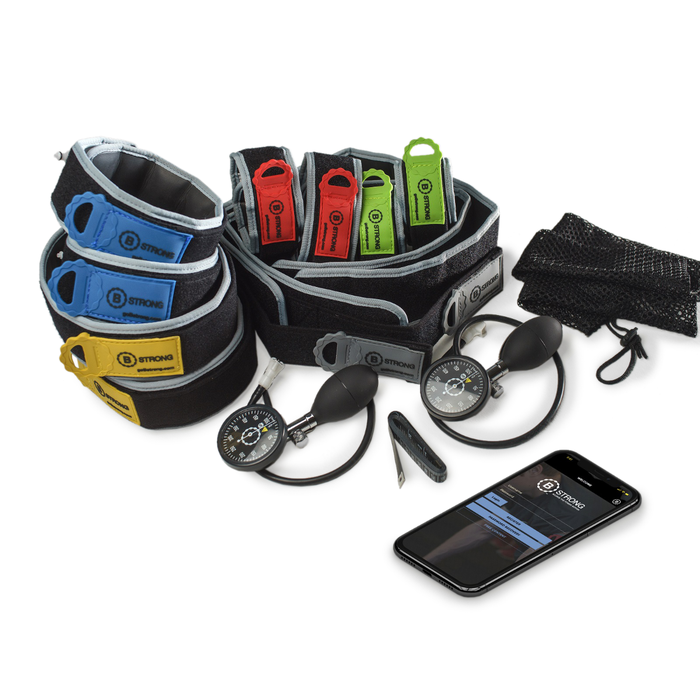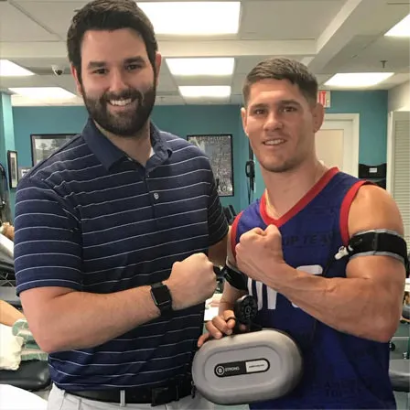B Strong BFR Workout Length
We recommend you don’t have a given band inflated for more than 20 minutes. If your workout lasts longer than 20 minutes, deflate the bands for a minute or so, then re-inflate and carry on with your workout.
B Strong BFR Workout Frequency
B Strong sessions have been performed as much as 2 to 3 times per day to as few as twice per week. Competitive athletes in their 20’s may perform a B STRONG session daily. While you recover quicker from a B Strong session than a maximal heavy lifting session, it still can be taxing. As you gain experience in how the B Strong session makes you feel, adjust your overall training stress to accommodate your individual appetite for training.
B Strong BFR Workout Session Count
The number of sessions you perform depends on individual circumstances like, fitness, training background, age, purpose of training, etc. in terms of how often to exercise. However, the number of sessions can range from twice per week to as many as 3 sessions per day.
Why the form of three sets of 30 reps of 3 to 6 exercises, is an important part of the mechanism of blood flow restriction. With blood flow restriction training, we are limiting the ability of the muscle to recover from otherwise easy exercise by restricting or impeding its blood flow. During easy/light exercise we only use a fraction of the fibers in the muscle to perform the movement. However, the first fibers that are recruited are heavily dependent on blood flow (oxygen, glucose, removal of acid, etc.) to operate. Because they don’t get their normal blood flow during the 1st set, they begin to fatigue. Then during the 30 second “rest” period, when normally muscle recovers, now without muscle contraction, they have even less than the normal blood flow moving through the muscle and get in even more metabolic trouble, rather than recovering and improving the situation. Then when the 2nd set starts, it is starting on fibers that have not recovered, which results in those fibers failing to generate necessary force. Additional fibers (not normally recruited for easy exercise) have to take over. These fibers are usually less trained and get in metabolic trouble even faster, resulting in even more metabolic trouble. Now during the 2nd rest phase, most if not all fibers in a muscle are now in “metabolic trouble” and aren’t recovering. The 3rd set finishes the whole muscle off and makes virtually all fiber populations contract. In this way of limiting recovery of the initial fibers recruited, one ends up recruiting all fibers. The metabolic waste of all these fibers triggers metabo-receptors in and around the muscle, that send the signal to the brain to release a systemic anabolic response. In addition, these metabolic changes are a local stimulus to increase protein synthesis and to up-regulate anabolic receptors on muscle membranes. In total, the “failure” or “fatigue” generated from 3 sets of 30 reps to failure, is the specific signal that stimulates increases in strength and function in muscle. The only other way to get this degree of disturbance of homeostasis is to lift heavy or maximal running intervals with “tying up” at the end.
There is an important concept, here, that is a paradigm shift from standard training. Normally, people think they train a given muscle group to get that group stronger or more trained. We are not training muscle (e.g. the biceps) to make that muscle more trained. That gets done, but the important point here is to use that contracting muscle to send a signal to the brain to elicit the systemic anabolic response.
Why 3 to 6 different exercises? We use 3 to 6 exercises to invoke that “disturbance of homeostasis” signal in as great a percentage of total muscle mass as we can. However, as with any training program, one has to start gradually. So typically we start with 3 exercises that cover all muscles distal to the bands and as the person adapts, we add on more exercises that also recruit muscle proximal to the bands and involve core musculature.
















